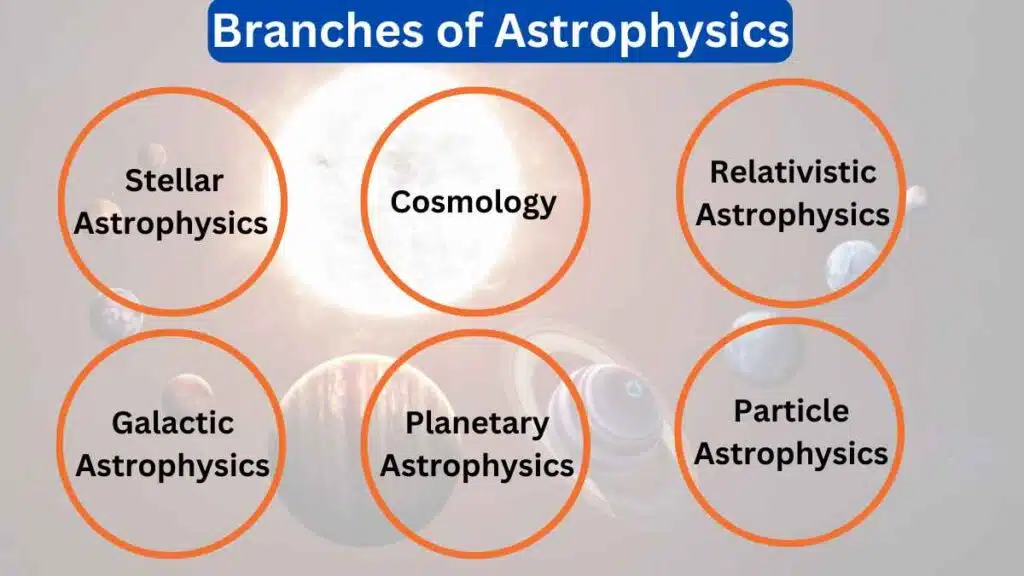What is Astrophysics?-Introduction, History, And Applications
Astrophysics is the branch of astronomy that uses the methods of physics to study the structure and evolution of celestial objects, such as stars, galaxies, and black holes. It has a rich history and today plays a major role in our understanding of the universe.
Introduction to Astrophysics
Astrophysics is the branch of astronomy that applies the laws of physics and chemistry to explain the birth, life, and death of stars, planets, galaxies, nebulae, and other objects in the universe.
It involves analyzing data from telescopes and other observatories to understand the physical processes that govern the behavior of objects in the universe. Astrophysicists use theories from physics, such as relativity and quantum mechanics, to interpret the data and make predictions about the behavior of celestial objects.
History of Astrophysics
The study of astrophysics began in the 19th century when Joseph von Fraunhofer first used spectroscopy to study the chemical composition of the sun. Later in that century, astronomers like William Huggins started examining the spectra of astronomical objects to determine their composition and physics.
The understanding of thermonuclear fusion within stars was developed in the 1930s. After World War 2, radio astronomy expanded the observation tools available to astrophysicists. The launch of the Hubble Space Telescope in 1990 and other space observatories has continued to advance the field.
Scope of Astrophysics
Astrophysics encompasses a vast range of phenomena in the universe. It studies everything from the largest scales (the structure and evolution of galaxies and the universe itself) to the smallest scales (the particles and radiation that reveal the physical processes inside objects). Astrophysicists observe electromagnetic radiation and particles like cosmic rays to learn about their sources. Computer simulations are used to develop and test models of astrophysical processes that cannot be replicated in a laboratory.
Branches of Astrophysics
Some of the main branches of astrophysics include:

Stellar astrophysics
Studies the physical properties, dynamics, and evolution of stars.
Extragalactic astrophysics
Studies galaxies and galaxy clusters as well as intergalactic medium.
Studies the universe as a whole, including its origins and large-scale structure.
Relativistic Astrophysics
Applies Einstein’s general relativity to compact objects like neutron stars and black holes.
Galactic Astrophysics
Focuses on the Milky Way galaxy structure, contents, and formation.
Planetary Astrophysics
Studies the physics of planets and planetary systems around other stars.
Particle Astrophysics
Studies cosmic rays, gamma rays, neutrinos, and other energetic radiation.
Applications of Astrophysics
Astrophysics research has many real-world applications, including:
- Understanding stellar lifecycles and the synthesis of heavy elements has implications for geology and life on Earth.
- Mapping dark matter and dark energy distributions, which impacts models of galaxy and structure formation.
- Developing technology for telescopes and instruments to enable new discoveries.
- Creating accurate clocks and GPS systems using pulsars.
- Modeling radiation environments and solar weather to protect technology and astronauts.
- Searching for extraterrestrial intelligence and Earth-like exoplanets.
- Inspiring students to pursue STEM careers.
What does Astrophysicists do?
Some of the main things astrophysicists do include:
- Observe astronomical objects using telescopes and instrumentation to collect data across the electromagnetic spectrum, from radio waves to gamma rays. This allows them to analyze things like atmospheric composition, temperature, radiation, magnetic fields, etc.
- Use spectroscopic techniques to measure properties like chemical composition, density, velocity, and redshift of distant stars, galaxies, and quasars. Spectroscopy splits light into its component wavelengths.
- Develop theoretical models and run computer simulations to explain observational data on objects like supernovae, neutron stars, black holes, active galactic nuclei, etc. Their models test theories of physics.
- Compare astronomical observations to predictions from their mathematical models and theoretical frameworks to refine understanding. If observations don’t match, the theory needs revision.
- Study cosmic microwave background radiation, the leftover heat from the Big Bang, to understand the origins and evolution of the universe.
- Search for and try to detect gravitational waves from merging black holes, neutron stars, etc. using LIGO and other instruments. Gravitational waves help test Einstein’s general relativity.
- Investigate cosmic ray particles from sources like supernova remnants to learn about the most energetic processes in the universe.
- Map the large-scale structure and evolution of the universe by studying galaxy clusters and superclusters.
- Contribute to the search for exoplanets around distant stars and any possibility of extraterrestrial life or intelligence.
- Interpret their findings for the scientific community and general public through research papers, conferences, lectures, and news stories.
The work of astrophysicists continues to provide fundamental insights into the contents, structure, origin, and eventual fate of our magnificent universe. Their theories also form the basis for new technologies.



Leave a Reply